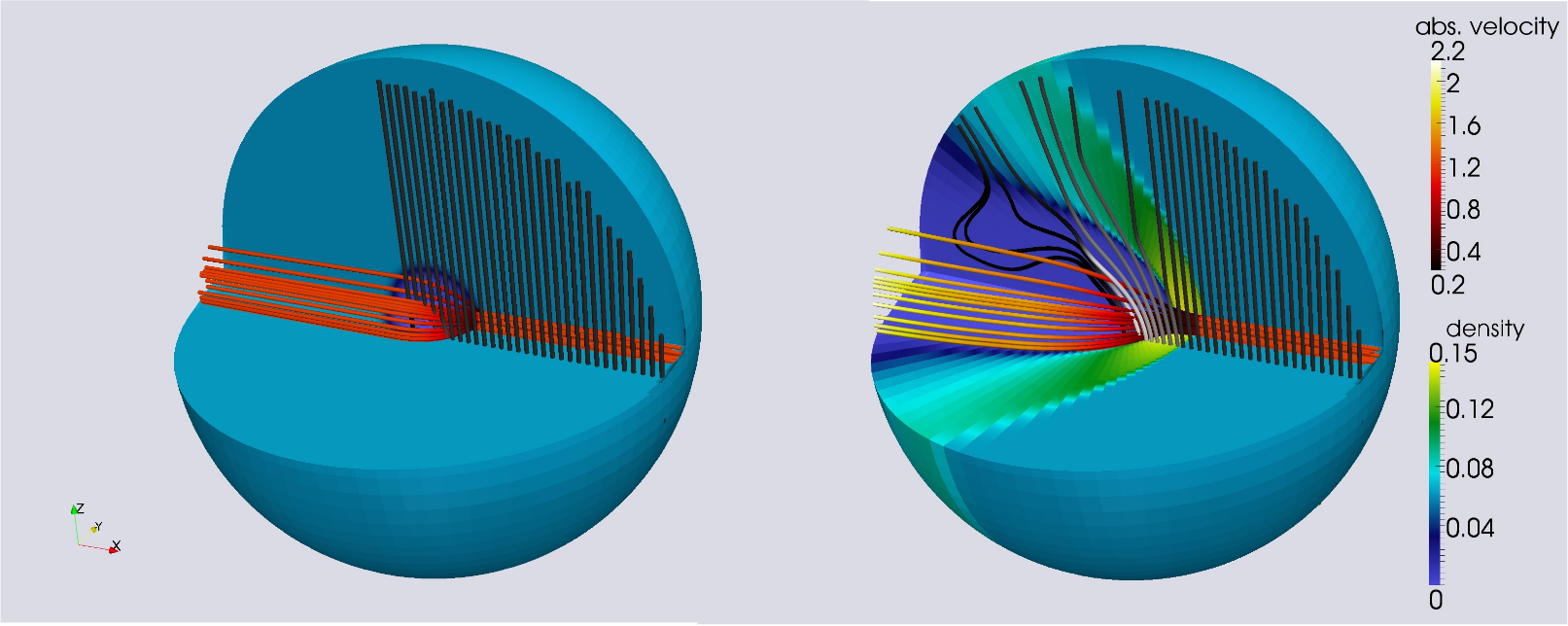The large-scale Heliosphere
The heliosphere as a whole comes about as a result of the interaction of the radially outflowing solar wind (SW) and the interstellar medium (ISM), to which the SW must eventually connect at some distance. Since the Sun is in motion with respect to the ISM, the latter is perceived in the Sun's rest frame as a slower, incoming 'interstellar wind' that causes the interface between both media, the so-called heliopause, to be compressed in upwind direction and much elongated in the opposite downwind or 'tail' direction, into which the SW plasma is eventually diverted. In the general case, two more surfaces are of importance: The termination shock, at which the supersonic SW plasma becomes sub-sonic and begins to feel the influence of the ISM, and, possibly, the bow shock, at which the incoming ISM becomes subsonic and is no longer undisturbed in its flow. In the simplest hydrodynamic case (which neglects the magnetic field), the problem is axisymmetric, and the heliopause can be found (albeit not analytically) by equating the gas pressure of both media. In reality, the situation is more complicated because of
- the magnetic fields of the SW (whose field lines form tightly wound spirals) and the ISM (whose strength and orientation are currently still a matter of scientific debate), as well as
- the presence of multiple species (H, H+, He, ...) which interact in various ways with each other and the magnetic field, thereby changing the shape and position of the various interfaces.
Furthermore, time-dependent variations of the heliosphere's structure are caused by
- eruptive solar disturbances like coronal mass ejections, large bubbles of hot plasma which are ejected from the Sun's surface due to a restructuring of the Sun's magnetic surface field,
- so-called corotating interaction regions, SW streams of different velocity which can overtake each other and create gradients which may steepen into shocks (timescale: up to several months),
- the periodic change in the orientation of the Sun's global magnetic field which is caused by the Solar cycle (timescale: 22 years), and
- changes in the ISM's density as the Sun passes through regions of spatially variable gas content (timescale: 103..5 years).
For a reliable modelling of these heliospheric dynamics, recourse to
numerical simulations becomes again mandatory. Major challenges are posed
by the need to resolve sharp gradients in a geometry which cannot easily be
covered with standard numerical grid layouts.
The global flow structure resulting from these influences has important
consequences for, e.g., the propagation of different populations of
cosmic rays (CRs), which offers a fortunate opportunity to employ the
tools and methods developed for galactic CR propagation also in the
heliospheric environment.


